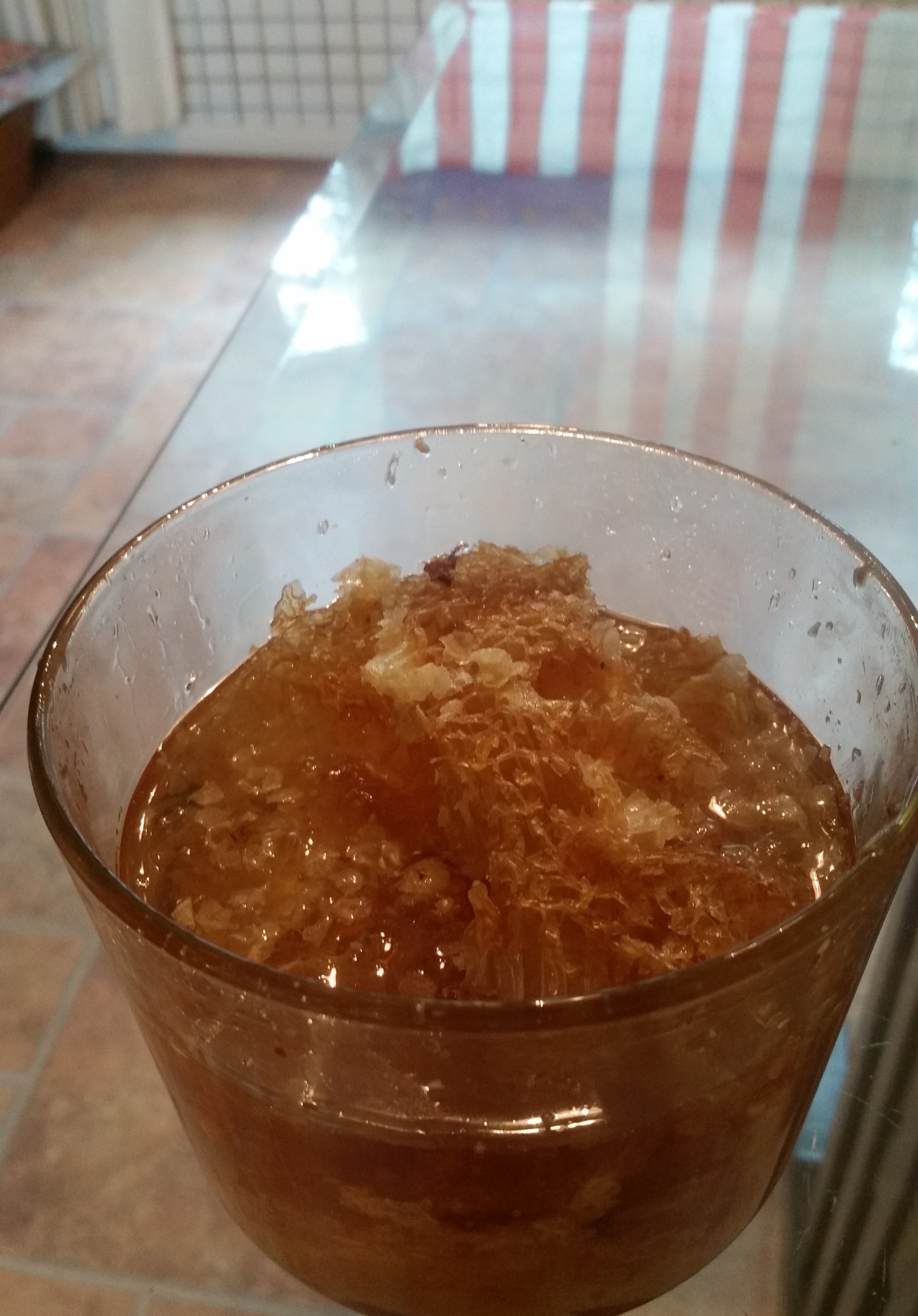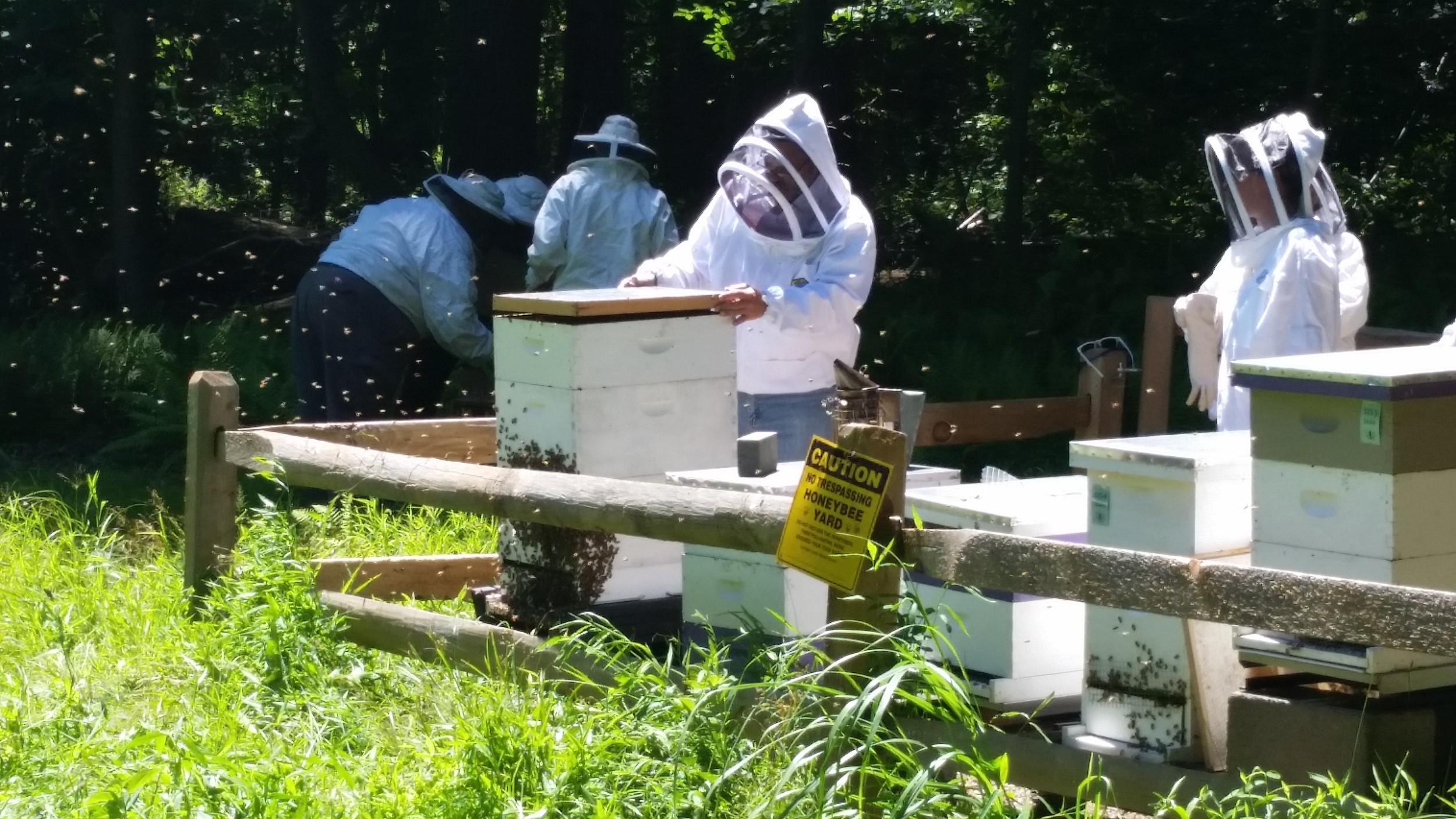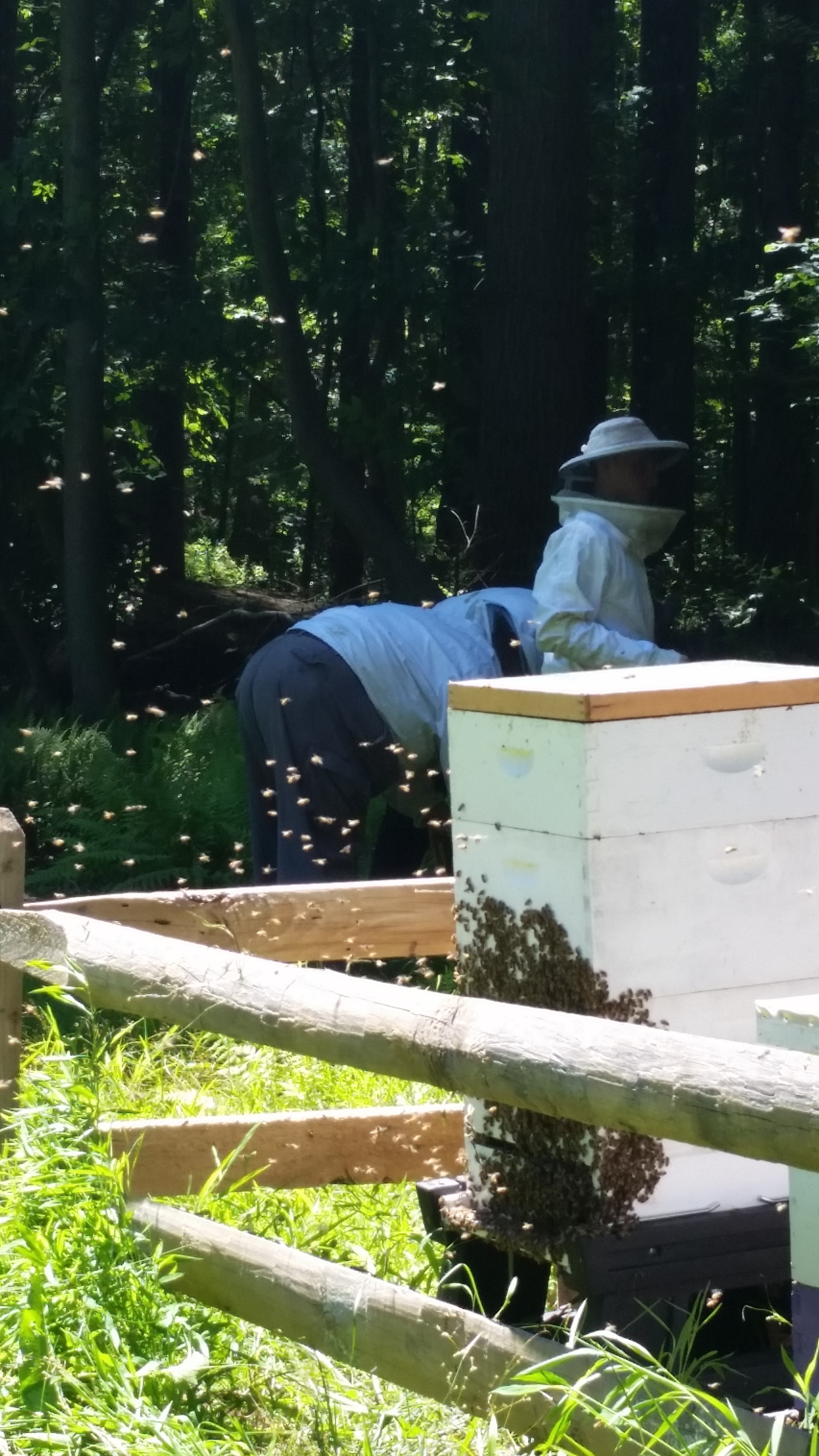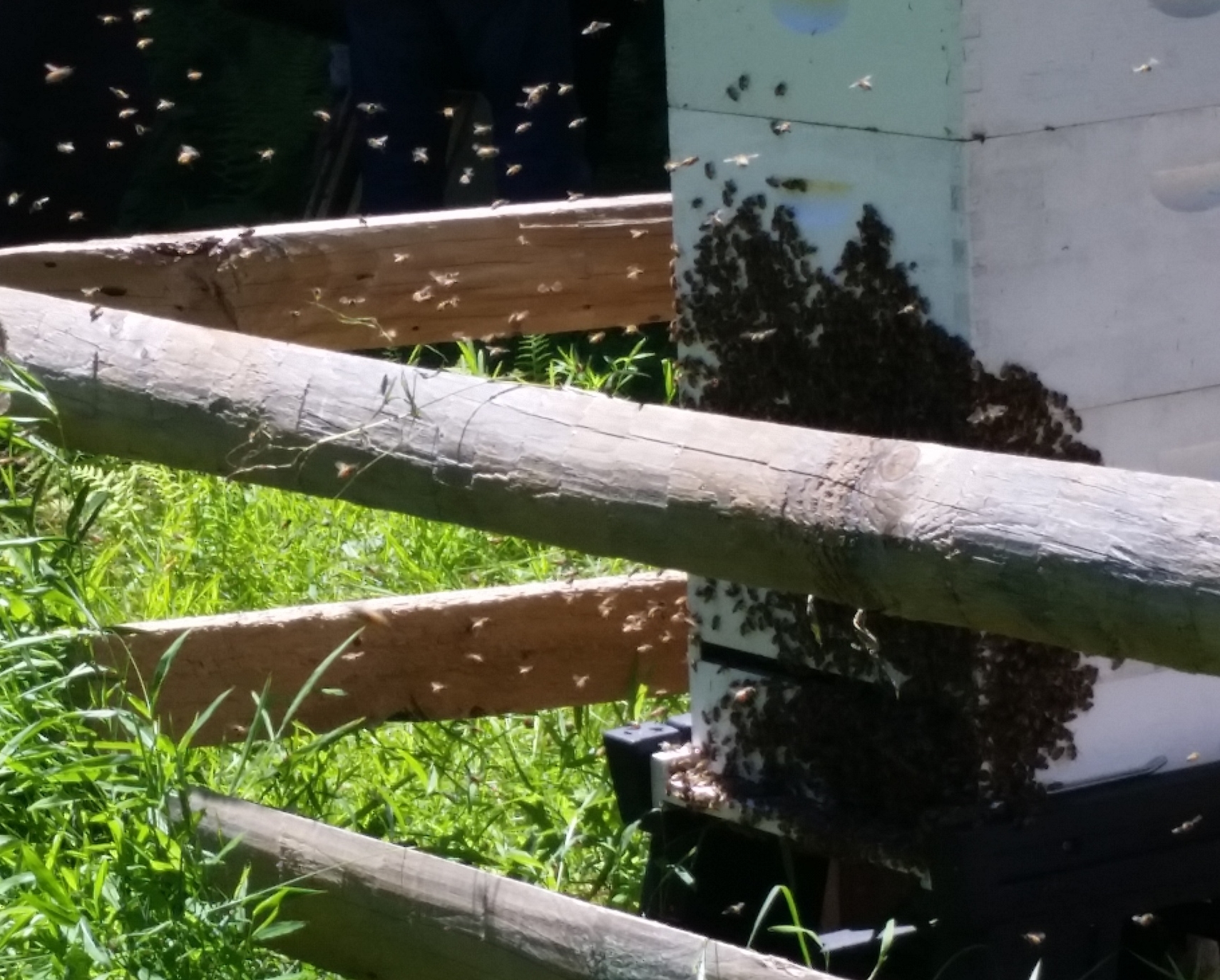Can you spot the queen bee? Photo from montgomerycountybeekeepers.com
There is real concern over the long-term health of honeybees throughout the world. Although honeybees are not native to North America, they are important as pollinators for many of our food crops (some estimates put our food crop dependency on honeybees to as high as 75 - 80%). Over time I will post more information on the best current science relative to honeybees, Colony Collapse Disorder, and other challenges facing our bees. But for today, I'd simply like to thank the dedicated volunteers of the Montgomery County Beekeepers. Besides keeping bees they teach an annual course on beekeeping and sponsor events to give hands-on experience to newbees. Jeff and I have been beekeeping for four years and still consider ourselves novices. Today we met with other beekeepers to learn various ways to treat for Varroa mites. To learn more about beekeeping, contact your local bee keepers association.
Honeybees are such fascinating creatures that caring for a hive can bring a greater sense of care for other creatures and our environment in general. You are suddenly acutely aware that herbicides and pesticides you or your neighbors might use have a direct impact on the insects sharing your world. You begin to observe other pollinators, distinguishing your honeybees from the native bees which also visit your garden. You begin to perceive a whole new, vastly more diverse world of insects. For example, the 7 species of honeybees (genus Apis mellifera) are only a small fraction of the more than 20,000 species of bees!
While at the MC Beekeepers events someone asked me about Utah's symbolic association with the beehive. I responded that though there are beekeepers in Utah, the symbol was chosen more as a representation of an ideal of community which the LDS Saints hoped to create -- where everyone worked together in community for the good of all. Virtues such as industry, self-sacrifice, and cooperation are attributed to honeybees and pioneer Mormons alike. Honeybees were first brought to the Utah Territory in 1848. By 1872 there were about 2,000 beehives in Utah. Some facts:
- There are three types of bees in the hive – Queen, Worker and Drone.
- The queen may lay 600-800 or even 1,500 eggs each day during her 3 or 4 year lifetime. This daily egg production may equal her own weight. She is constantly fed and groomed by attendant worker bees.
- Honey bees fly at 15 miles per hour.
- Honey bees' wings stroke 11,400 times per minute, thus making their distinctive buzz.
- Honeybees are the only insect that produce food for humans.
- Honeybees will usually travel approximately 3 miles from their hive.
- Honeybees are the only bees that die after they sting.
- Honeybees have five eyes, 3 small ones on top of the head (ocelli which have a single lens like the human eye but can view UV light) and two big compound ones in front. They also have hair on their eyes! (See photo below)
- Bees communicate with each other by dancing and by using pheromones (scents).
- Honeybees never sleep!
(utahcountybeekeepers.org)
Bee's compound eye of many single eye units each of which sends it's view to the bee brain which combines the images. Each hair aids in determining the flight speed and direction of the bee. Photo: keeping-honey-bees.com
More facts: Any worker bee larvae can become a queen if feed Royal Jelly. (What I'd like to know -- how the nurse bees know the secret recipe to make this jelly!) Workers create a new queen if they sense their queen is sick or missing. They will often create several new queens with the strongest (often the first to emerge) decapitating her rivals as they emerge. Males (drones) do no work except to mate a virgin queen. Their sex organ is barbed and is pulled from their body causing death on mating. Each hive has 25,000 - 60,000 bees, a small fraction of which are drones. The drones are expelled from the hive in winter or when food is scarce. The temperature near the queen is kept a steady 93 degrees no mater how hot or cold the exterior temperature. If bees are sick or dying they will try to leave the hive -- thus prote cting the colony. Bees are also clean -- among other things during the long cold periods in winter they will refrain from "going to the bathroom" until a warm day when they can finally leave the hive. (Sometimes beekeepers will see yellow snow outside the hive on a warmish winter day.) Imagine having that level of bladder control!
Best of all, for me anyway, they can create that marvelous elixir, honey.
Celebrating the 4th of July with freshly extracted honey.
Photos above at Brookside Gardens bee yard kept by volunteers with Montgomery County Beekeepers.





